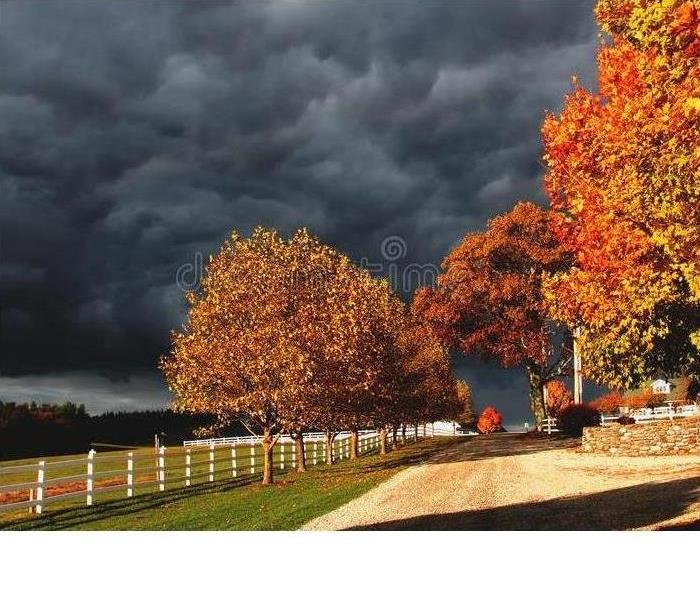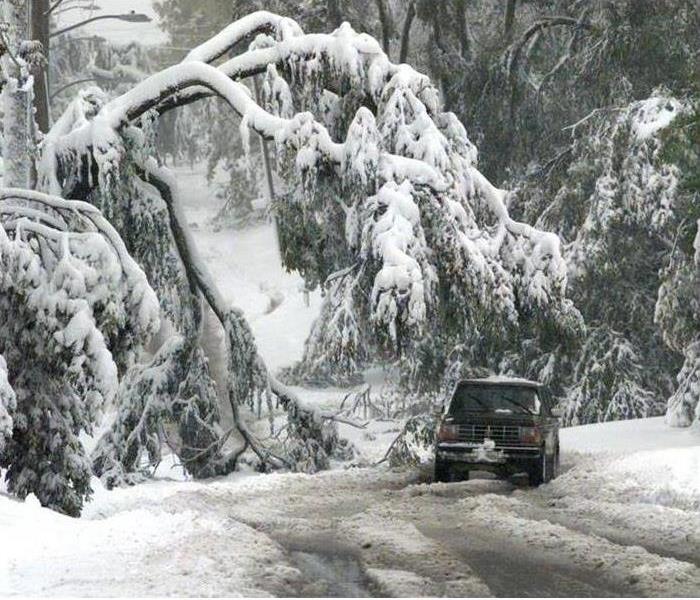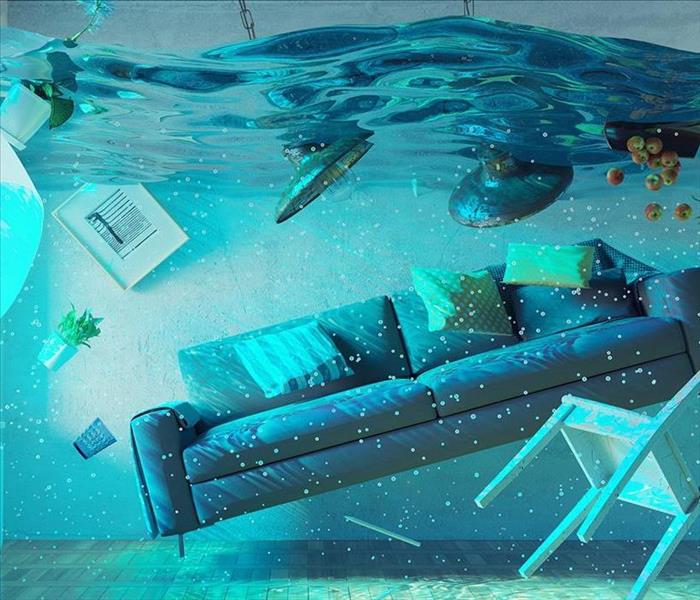Recent Storm Damage Posts
Clean up Safely: Storm Clean-Up Services in Hastings, NE
4/1/2024 (Permalink)
When storms leave a trail of destruction in their wake, it's important to restore resilience and strength to the affected communities. At SERVPRO of Grand Island and Hastings, we're here to help you restore and repair after disaster strikes.
The Disaster Response Team is equipped to handle the challenges of storm damage, providing immediate assistance and support to affected property owners. From debris removal to structural repairs, we offer comprehensive clean-up services tailored to the unique needs of each client. We understand the emotional toll of storm damage and provide compassionate support every step of the way, helping our clients navigate the recovery process with confidence.
When a storm hits, SERVPRO of Grand Island and Hastings is your partner in recovery. Contact us today for reliable and compassionate storm clean-up services in Grand Island and Hastings, NE.
Water Damage Cleanup Mistakes
8/3/2022 (Permalink)
Water damage cleanup mistakes can lead to a lot of headaches and stress. If your property needs water damage restoration, here are a few of the mistakes you’ll want to avoid.
Waiting Before Cleanup
Water damage can lead to a lot of problems. The first rule of cleanup is to do it as soon as possible. Every minute that your belongings and property stay submerged lessens the chances of you getting that item or property back to its pre-damaged state. If you wait until it’s convenient to perform the cleanup, you’ll only end up with bigger problems.
Wrong Equipment
Using the wrong equipment will only aggravate the problem. Plus, the kind of equipment or tools you have might not be suitable for handling the water in your home. That means you won’t succeed at drying your home completely, which will leave your home at the mercy of mold and mildew growth. Don’t let that happen. Hire pros to handle this for you. They have specialized equipment to ensure the fast and efficient drying of your belongings and property.
Neglecting Important Details
Most of the time, people forget about the items they slog through when they wade through water damage. But there could be an electrical problem, broken glass, and other items that could injure you. It’s best that you hire pros instead of tackling this on your own. Restoration experts know what to look out for and how to do this in the safest way possible. They’re much better equipped to handle this than you with your makeshift tools.
Not Doing Your Homework
When you look for a restoration service, don’t hire the first company that you find. Look at the company’s history and background. SERVPRO of Grand Island and Hastings is your trusted resource for cleaning and restoring water-damaged property. Our teams are IICRC certified. We have the latest advanced equipment and training to make sure your water damage problems are solved completely.
If you have water damage to your home or business property, call us anytime 24/7 at 308-210-2960. We'll be there to help!
Know Your Options in Restoration
3/11/2022 (Permalink)
SERVPRO Offers Professional Floodwater Removal Solutions for Homes and Businesses in the Grand Island and Hastings area
Even if you try to stay prepared for Western Nebraska storms and flooding, there is always the chance that something happens, and you need skilled technicians to handle the cleanup. Working with a team like SERVPRO helps return your property to pre-event condition fast if you have flooding and water damage. Additionally, because floodwater is often full of contaminants, hiring trained technicians get everything done in the safest manner possible.
It is wise to have our number handy if you need prompt floodwater removal in the Grand Island and Hastings area after a storm. Our IICRC-certified water restoration technicians (WRT) are ready 24 hours a day so that you are not left waiting with standing water or storm damage. We’re Faster to Any Size Disaster and provide our clients with detailed estimates before beginning restoration. Some of the quality services that you can expect when you call us include:
- Rapid water extraction with powerful pumps, extractors, and various attachments
- Packout services to either store items off-site or relocate them for detailed cleaning and drying
- Board up and tarping services for addressing a leaking roof from storms, broken windows, and more
- Controlled demolition to replace drywall, ceiling tiles, wood panels, and structural elements
- Precision drying and dehumidification to return the air inside your property to normal relative humidity (RH) levels
- Sanitizing and deodorizing with the help of EPA-registered antimicrobials and cleaning agents – leaving your property Certified: SERVPRO Cleaned
- Documenting any relative inventory and details regarding your project to aid in the insurance claims process
SERVPRO of Grand Island and Hastings is here to help with floodwater removal and storm response. Call us at (308) 210-2960, and we can deploy our Green Fleet within hours of initial contact.
Scopes and Inspecting Water Damage
3/11/2022 (Permalink)
Inspecting the flood helps the technicians from SERVPRO of Grand Island and Hastings to determine the size of the project, the fundamental process also helps experts to identify the source of water damage, determine the type of water in your flooded home, and to move furniture and other valuables within your flooded home. Furthermore, this step helps the company to formulate a suitable cleanup process to eliminate the water in home.
Following inspection, our restoration company’s water cleanup experts will start extracting water from the flooded home using powerful pumps and vacuum units. A reputable restoration company will also use moisture detectors and infrared cameras to spot and eliminate water from crevices. Water removal reduces the drying time of your property's floor and wall, it prevents subsequent damage, and it prevents mold growth.
If these surfaces are left wet, they may start to break down, grow mold, swell, or even warp. To avoid this loss, SERVPRO of Grand Island and Hastings will use specialized equipment like dehumidifiers and industrial air movers to accelerate the process of drying. After that, they will use moisture meters to ensure that all surfaces achieve the desired drying goals.
Call us at (308) 210-2960 if you have questions about the problem in your home.
Is Your Carpet Ruined After a Flood?
11/11/2021 (Permalink)
Floods can bring contaminants, dirt, and soil into your home. Even after removing the standing water and drying a property, these stains can remain on surfaces, particularly those porous materials like carpets.
Performing flood damage restoration in Nebraska area home relies on expertise and effort. SERVPRO technicians are trained to recognize different carpet damage types from absorption to agglomeration and water exposure. Using tried and tested methods, we can often return carpets and textiles to an original condition. At the end of service, one of our crew chiefs can guide you through the property to explain the outcomes of restoration and effective restoration of materials.
- Burn tests and chemical tests are performed as standard to avoid further damage.
- Our hot water extraction techniques are effective at removing soils from carpets, textiles, and other porous materials.
- Roto machine buffering can restore the luster of wet carpets in the property.
Restoring rather than replacing materials is more cost-effective. Contact SERVPRO of Grand Island and Hastings for flood damage restoration at (308) 535-1115
How Landscaping Can Help Slow Flood Damage
11/11/2021 (Permalink)
Have you ever seen a school science demonstration of water being poured into two equal containers of soil, but one has plants growing and one does not? In the box void of vegetation, the water runs out the bottom nearly as quickly as it flowed in. In the box containing rooted plants, only a minimal amount of water trickles out. This experiment shows the importance of proper water management around your property. Learn how you can become one with the flow, using easy landscaping projects to prevent storm run-off from causing outside flooding around your home in the Grand Island and Hastings area.
- Slow the flow. Apply a deep layer of heavy mulch to slow rain drainage, giving it time to filter through the soil instead of pooling or running off to problem areas.
- Cultivate plants. Installing plants and shrubs at the base of your home can help slow the flow of water and prevent outside flooding. If you have a particular area where water tends to pool during storms, consider making a rain garden. This shallow basin is not a bog or a pond, but it uses plants to filter the rain water and facilitate its travels to the water table.
- Be a water mover. During the next rain storm, check the flow of water from your roof. Look for areas that need rerouted and consider adding rain chains, moving gutters, or adding flexible extensions to downspouts to direct water away from your foundation.
- Keep water captive. Add a rain barrel to the end of a downspout and feel good about your impact on the environment when using that recovered water to help take care of your plants.
Outside flooding can cause damage to structures on your property.
When water damage happens, it can quickly lead to mold trouble since mold spores are abundant in the environment and reproduce quickly. Professional water mitigation specialists can help clean up flood water and ensure materials are dried thoroughly to prevent your minor problem from becoming a major one.
Preparing Our Youth For Disasters and Emergencies
10/1/2021 (Permalink)
When the unexpected happens, will your child know what to do? Disaster can strike anywhere, usually with little to no warning. If your child is put in an emergency situation and doesn't know how to react, they could be severely hurt and may even feel significant anxiety that can follow them for years. With the proper education, though, your child can feel more secure, confident and helpful in the event of a disaster.
Preparing Our Youth
Ultimately, it takes the whole community to educate our youth through preparedness tips and advice. With everyone doing their part, children will understand the seriousness of an emergency situation and strive to become leaders in their classrooms and neighborhoods, ensuring that everybody is prepared for the next disaster. The Federal Emergency Management Agency (FEMA), the American Red Cross and the Department of Education have worked together to create the National Strategy for Youth Preparedness Education, a document that outlines a vision for prepared youth in the United States, and how communities can turn that vision into a reality. This document seeks to educate youth and their parents so that communities are better able to prepare for, respond to and recover from future disasters.
How to Prepare Youth for Emergencies and Disasters with Nine Steps
The National Strategy document indicates nine crucial steps that people and organizations at the local, state and federal levels should take to create a strong and prepared youth community. Here's how you can help prepare young people for several types of emergencies and disasters:
- Make it important. Elevating the importance of youth preparedness learning programs in schools and civic organizations allows children to recognize that being prepared is crucial throughout every area of the community.
- Evaluate. If existing youth preparedness programs aren't up to par, develop guidance, tools and up-to-date protective actions in order to ensure that the children in your community are given proper direction.
- Support. Communities, organizations and schools should be able to prepare children without facing unnecessary resistance or interference.
- Create. Establish a relationship between local youth and the first responder community, so that your kids can understand how first responders react in emergency situations. Your kids can also learn from their own heroes what they can do to help in a disaster.
- Link. Connect youth preparedness to family and community participation, so that your child can become an advocate in your area.
- Make school preparedness key. Schools, by their nature, promote broad community participation already, so adding preparedness programs that include curricula, drills and exercises for all local disasters can help children understand what to do when faced with a crisis.
- Build and strengthen. Creating and maintaining partnerships among stakeholder agencies and organizations allows your community to receive up-to-date information about youth preparedness best practices. Local leaders can also be advocates to discuss your community's needs, especially if your area is prone to certain natural disasters.
- Identify. Find opportunities to insert youth preparedness education into youth culture, such as using social media or local ads to initiate a conversation about the importance and effectiveness of preparedness programs.
- Design. Create a sustaining model that designs, develops and delivers valuable programs to train youth in your community. Since certain areas are known to have specific recurring natural disasters, it's important to create a plan that's unique to your community's needs.
By implementing these nine priority steps in your community, your children can receive training to help them feel confident when faced with a disaster. Giving them the tools they need to understand how to prepare for, respond to and recover from several types of emergencies – from fires to floods and more – can make all the difference when disaster actually strikes.
Flooding and Your Basement
10/1/2021 (Permalink)
A flooded basement hits like an oncoming train. Whether the problem stems from a broken pipe, failed sump pump or the result of a heavy downpour that found its way inside, a flooded basement needs to be dealt with immediately to prevent long-term damage.
When dealing with basement floods, there are some things you can and should do immediately, some things you might want to consider doing in the future and times when you should really call in the professionals.
Flooded Basement: Safety First
Safety should always be a priority. Entering a wet basement can be dangerous and even deadly. Before stepping into a flooded basement consider the following:
- Is there a risk of electrical shock? If it's safe to access the main breaker box, turn off the power before you enter the basement. If the breaker box is located in the flooded basement, contact your local power company or a trusted electrician to help first.
- Do you smell gas? Gas leaks are deadly and dangerous. If you smell gas, get out of the house and alert your utility company.
- Is the flood water contaminated? Sewage, chemicals and other pollutants in flood waters pose a health risk to humans and animals. Avoid contact with contaminated flood water and any items that may have been in contact with contaminated flood water.
- Is the flooded basement still structurally safe? If there is any question regarding the structural integrity of the flooded basement or the house above it, do not enter. Call for professional help.
How to Clean Up a Flooded Basement
If it's safe to enter, there are several things you can do to begin cleaning up your flooded basement. Before you dive in, remember the first rule is always safety. Wear protective clothing, safety glasses and gloves as you clean and inspect the basement. Make sure the space is well-ventilated, which also speeds the drying process.
Retrieve and remove: The quicker your personal items can be removed from water, the better the chances for repair and restoration. You need to get items out of the basement and dry off any remaining dampness to reduce the likelihood of mold growth.
Extract water: If the water is just a couple inches deep, you may be able to remove it using a wet/dry vacuum or portable sump pump. Both of these items can be rented rather than purchased. If you're wading through several inches of water or more, though, you'll likely need to call in professionals like those at SERVPRO of Kearney and North Platte.
Remove rugs: Any area rugs need to be removed and dried out immediately. If possible, hang area rugs outdoors to dry or opt for a professional cleaning. If the basement was carpeted, you may have to remove the carpet. Water can damage not only the carpet fibers but also the glue, backing, padding and underlayment, leaving the carpet at higher risk for mold. However, do not attempt to remove tacked-down carpeting yourself, leave it to the professionals.
Run a dehumidifier and fans: To prevent the development of mold after a basement flood, it's essential to keep the level of humidity as low as possible. If the weather is favorable, open any and all windows you can, then run a dehumidifier and fans to increase ventilation and lower the humidity levels.
Clean and disinfect: After the water is extracted and the basement thoroughly dried, the whole space needs to be cleaned and disinfected. Carefully wash and sterilize anything the flood waters touched that you were able to salvage.
Keep an inventory list: As each item is removed from your flooded basement and treated for water damage, add it to an inventory list. Keep a record of all the details regarding what was damaged in the flood, and hold onto estimates and receipts from any restoration or repair procedures. These documents will support any insurance claim you plan to make.
SERVPRO has been helping homes and businesses cope with water damage for more than 54 years. When your basement floods, call SERVPRO of Kearney and North Platte to handle the water extraction, drying and any necessary mold remediation.
Best Helpful Hints to Get You Through the Winter and Storms
3/8/2021 (Permalink)
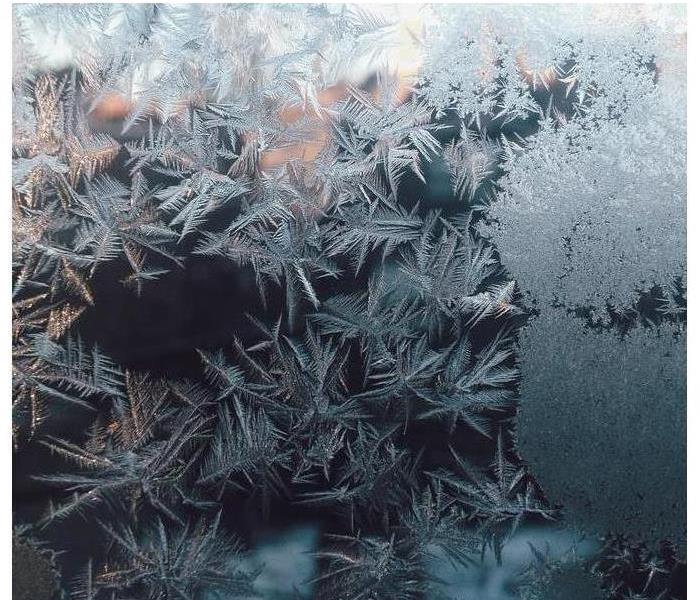 We know winter storms on on their way, so you can call on us when things get out of hand and the cold affects your home or business.
We know winter storms on on their way, so you can call on us when things get out of hand and the cold affects your home or business.
- Ceiling fans are not just for summer: flip the switch to reverse the spin of the fan and turn on the lowest speed to blow warm air down from ceiling.
- Use energy from the Sun: During the day, open drapes and blinds to allow sunlight to help warm the house, land then close at night to hold in heat.
- Dress in Layers: Pack an extra pair of warm socks, blankets, wool sweaters and long-johns or coveralls in your car to keep warm.
- Keep a bag of clay kitty litter in car: If your car gets stuck in deep snow or slick ice, sprinkle kitty litter (non-clumping) at the base of your tires to add some traction to get moving again. Extra weigh in trunk will create added pressure on your tires, ensuring greater contact between your tread and the ground.
- Don’t smoke or drink coffee before shoveling: Caffeine and nicotine are stimulants and can add extra stress to the heart.
- Learn to walk like a penguin: To walk safely on ice, walk like a penguin. Point your feet out, land hold your arms out slightly to your side. Shuffle, land take short steps.
- Easy deicer: The night before freezing temperatures, rub half a potato over your car’s windshield. The sugar from the potato creates a barrier over the window and prevents ice from forming, when you come out in the morning you will not have to scrape! Simply rinse and wipe with your wipers when you get on the road.
- Gas Up: During cold weather months, it is good practice to keep at least a half tank of gas in your vehicle at all times. Not only does it prevent you from being stranded, but it prevents any water in the tank from freezing, which can damage the fuel pump.
- Frozen locks: Squirt a little hand sanitizer on them. The isopropyl alcohol that kills germs also lowers the freezing point of water, and can melt the ice inside the lock within seconds.
- Grab a roll of duct tape and keep it in car: Not only does it fix everything, but you can use it as a fire starter – duct tape is very flammable and is a great tool to get a fire going in an emergency. Don’t forget to have a lighter or matches in your emergency kit.
- Candles: will keep you warm in your car if you are stranded in car. Also, don’t forget to have a lighter or matches.
- No more icy walkways: Sprinkle leftover coffee grounds on your freshly shoveled walk or driveway to help melt the ice – it’s a natural and environmentally friendly way to add more traction underfoot. Remember to wipe feet when going inside.
- Dry wet shoes: by stuffing them with dry newspaper to absorb the moisture quicker.
- Shoveling Snow: Spay shovel with non-cook cooking spray, snow will slide off easier.
- Winter Survival Kit to keep in vehicle: Flashlight, batteries, snacks, water, ice scraper, first aid kit, candle and lighter, phone charger, warm outer clothing and travel shovel.
We Help No Matter the Weather
3/8/2021 (Permalink)
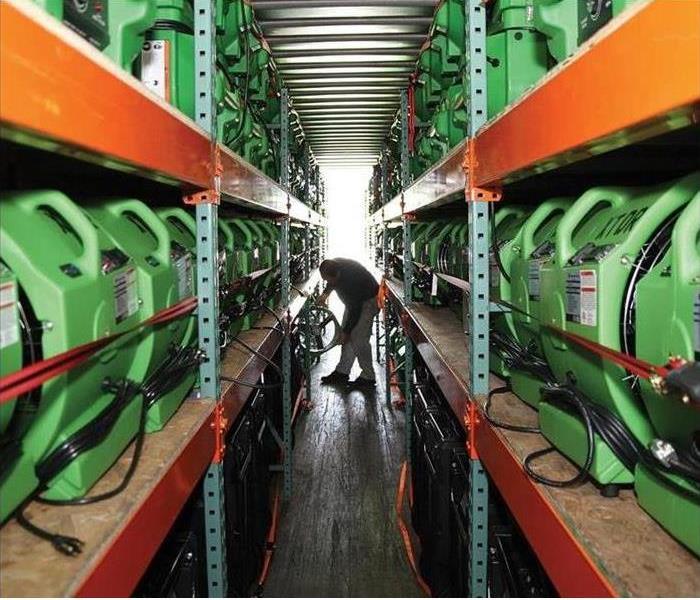 We will make sure to help you and your home or business no matter the weather. We know how stressful these times can be.
We will make sure to help you and your home or business no matter the weather. We know how stressful these times can be.
SERVPRO remains a reliable option for homeowners and business owners during disasters. Our goal is to make any disaster disappear "Like it never even happened." We offer 24-hour emergency service because we know that storms, fires and water issues can happen any day at any time. We want to help you get back to preloss conditions no matter the situation. Whether it’s two in the afternoon or two in the morning, we will respond to your disaster quickly to get you back to a safe and functioning space. This includes hazardous mold mitigation, water damage mitigation, biohazard cleanup, and fire cleanup. We know the stress that these situations can bring, and we are here to help the process move smoothly and efficiently. We make our services available 24 hours a day for 365 days a year. We want to ensure you will be helped during overwhelming and unexpected times. We come ready for whatever happens. No matter the weather or time of day, we will be there to assist.
Autumn Storms
11/10/2020 (Permalink)
Autumn storms are right around the corner. The effect of these storms can be good or bad. As much as we love the sound of thunder, the jolt of lightning going through the sky and the smell of rain, there are bad things that can come along with it. Power outages are often a risk associated with storms. It’s good to know what to do in case you lose power, because you never know how long it could be out. It could be out for a matter of seconds, or for several hours. Here are some tips on what how to be prepared, and what to do during a power outage.
- Keep flashlights available around your house. Avoid using candles when possible.
- Keep the opening of freezers and refrigerators to a minimum. When kept closed, refrigerators can stay cool up to 4hours, and freezers can stay frozen up to 48 hours. If need be, you can put ice in a cooler to keep your food cold.
- Watch out for carbon monoxide poisoning. If you are running a generator, it should be used outside and at least 20 feet away from a window or door. Never use a gas stovetop, oven, camp stove, or charcoal grill to heat your home.
- If it’s cold in your home, add more layers of clothes and blankets. Don’t use the oven or a grill as a heating source. If it becomes too cold, try to make arrangements to go to another location where heat is available.
- Turn off and disconnect any appliances and electronics. The power may surge or spike when it is restored, and that may cause damage to the items.
- If you have a sump pump, keep an eye on it so you don’t end up with a flooded basement.
If a storm occurs, the safety of you and your family is of the utmost importance. Be safe out there!
SERVPRO of Grand Island & Hastings specializes in the cleanup and restoration of residential and commercial property after a fire, smoke or water damage event. We can handle any size disaster!
Call us at (308)210-2960
Winter Storm Hazards
10/29/2020 (Permalink)
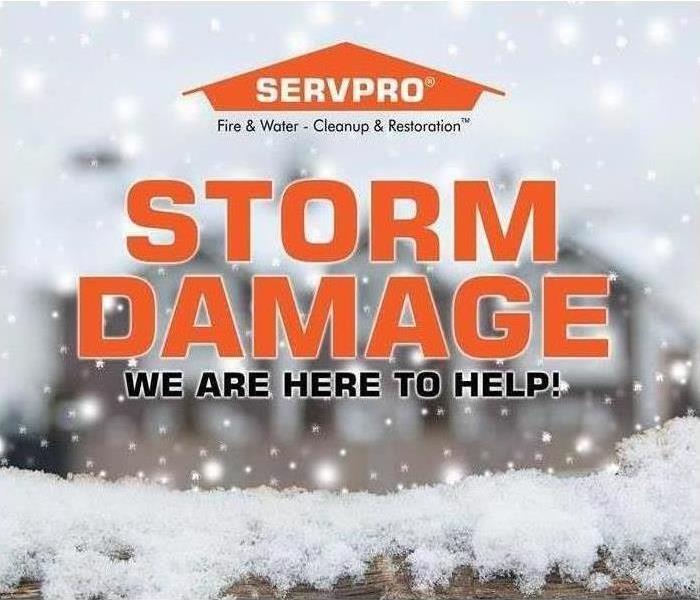 Give us a call, we will assess the situation "Like it never even happened."
Give us a call, we will assess the situation "Like it never even happened."
Winter Storms can bring many hazards
Many destructive impacts can come out of a single winter storm. Are you prepared for the coming winter? The array of hazards that can come from a winter storm are sometimes countless.
- Ice: Accumulations of a half inch or more, because of it's weight can cause widespread destruction and power outages and can have a crippling impact.
- Wet Snow: Much like ice accumulation, wet snow adds extra weight and stress, increasing the chance of damage. Moist snow sticks easily to trees and power lines.
- Snow on Roofs: Several feet from one or multiple storms accumulating on a roof can add stress, causing them to collapse.
- Flooding After the Snow: A rapid warm-up or rain following a winter storm with an expansive snow pack can set the stage for major flooding.
Melting snow and ice after a storm can also cause damage to the inside of your home or business. Call the professionals at SERVPRO of Grand Island & Hastings to assess the situation and put you to Pre-Winter condition, "Like it never even happened."
Call us 308.210.2960
Frozen Pipes: A Winter Water Damage Emergency
10/29/2020 (Permalink)
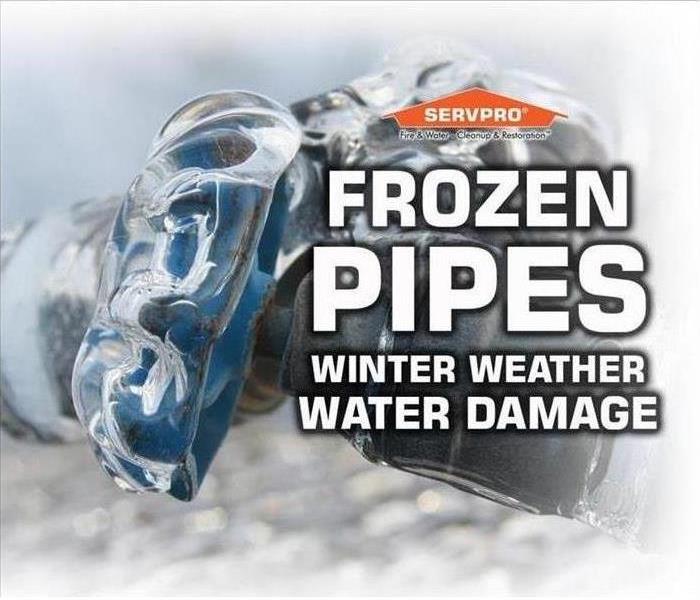 Low Temperatures can freeze pipes, make sure you are keeping an eye on your home during winter.
Low Temperatures can freeze pipes, make sure you are keeping an eye on your home during winter.
We can’t control the weather frigid winter temperatures are here in the Midwest, the lower temperatures cause a new set of seasonal Nebraska property disasters including frozen pipes, ice dams and other frozen water damage concerns.
Every winter our SERVPRO of Grand Island & Hastings professionals help countless homes with the restoration, cleanup and repair of their property following a frozen water property disaster.
Why is a Frozen Pipe a Concern?
- When water begins to freeze, it expands. This can cause both plastic and metal pipes to burst, possibly leading to significant water damage to your home or business.
- Since water expands when it freezes, it puts unwanted pressure on pipes.
- As water freezes, the force exerted from the expansion can cause a pipe to burst, regardless of the strength of the material.
- You may not know you have a burst pipe as the water has turned to ice. Once the temperature starts to warm and thawing begins, leaking and flooding can occur.
Keeping your home safe from storm damage.
3/18/2020 (Permalink)
Storms can come upon us without much warning. Yes, we watch the news, but bad weather is still unpredictable, so we need to take steps to keep our homes safe from storm damage.
An inspection of your home’s premises is a really good idea to conduct before inclement weather hits. A leaky roof or windows can cause big problems during extreme conditions such as a snowstorm or heavy rains. Do all your exterior doors and windows fit correctly? When’s the last time you took a look at your roof to see how things are looking up there? These are all great questions to ask yourself.
Loose shutters and rain gutters can present a real problem in high winds, as can unstable large trees. It might be a good idea to trim back trees and bushes with large heavy branches that are not in good condition so that windows and vehicles are not in danger of storm damage in windy conditions.
Many homes in older cities have drainage ditches at the front of the property. Take time to inspect this area and remove debris or dirt that might obstruct the flow of water from heavy rain. A clogged drainage ditch can cause a lot of damage by flooding your property during, or even after, a storm.
Your family is very precious to you. In the event of a storm, do you have a system in place that will help you to get information to everyone in case of a weather emergency? Most of us use our cell phones to communicate these days, but in the case of a bad storm, your cell phone service could be at risk. You might consider installing a good old-fashioned landline, just in case. If you or a family member gets stuck at work or out doing errands, families will worry, so it’s vital that lines of communication stay open.
SERVPRO of Grand Island & Hastings specializes in the cleanup and restoration of residential and commercial property after a fire, smoke or water damage event; as well as mold remediation. We can handle any size disaster!
Call us today at 308.210.2960
Floods are the most common natural disaster in the USA
3/9/2020 (Permalink)
Floods rank as one of the most common and widespread natural disasters in the United States. Whether you live near a coastline, along city streets, in the mountains, out in the country, or even in the desert, there is potential for flooding. Anywhere it can rain, it can flood. In the past ten years, the average annual flood losses in the U.S. were more than $29. Billion according to floodsmart.gov. A variety of events can cause flooding, like heavy rains, when ocean waves come onshore if the snow melts too fast, or when dams or levees break. A flooding event may occur over a long period and could last days, weeks, or longer.
SERVPRO of Grand Island & Hastings specializes in the cleanup and restoration of residential and commercial property after a fire, smoke or water damage event; as well as mold remediation. We can handle any size disaster!
Call us today at 308.210.2960






 24/7 Emergency Service
24/7 Emergency Service

